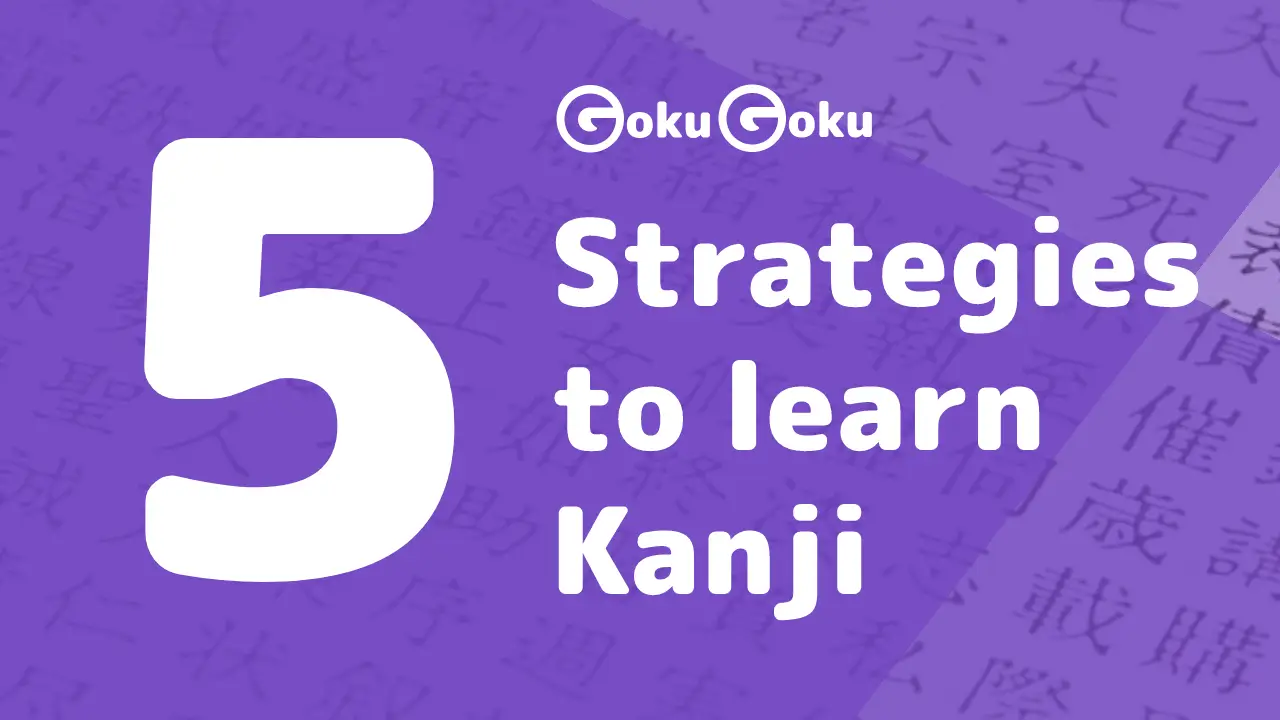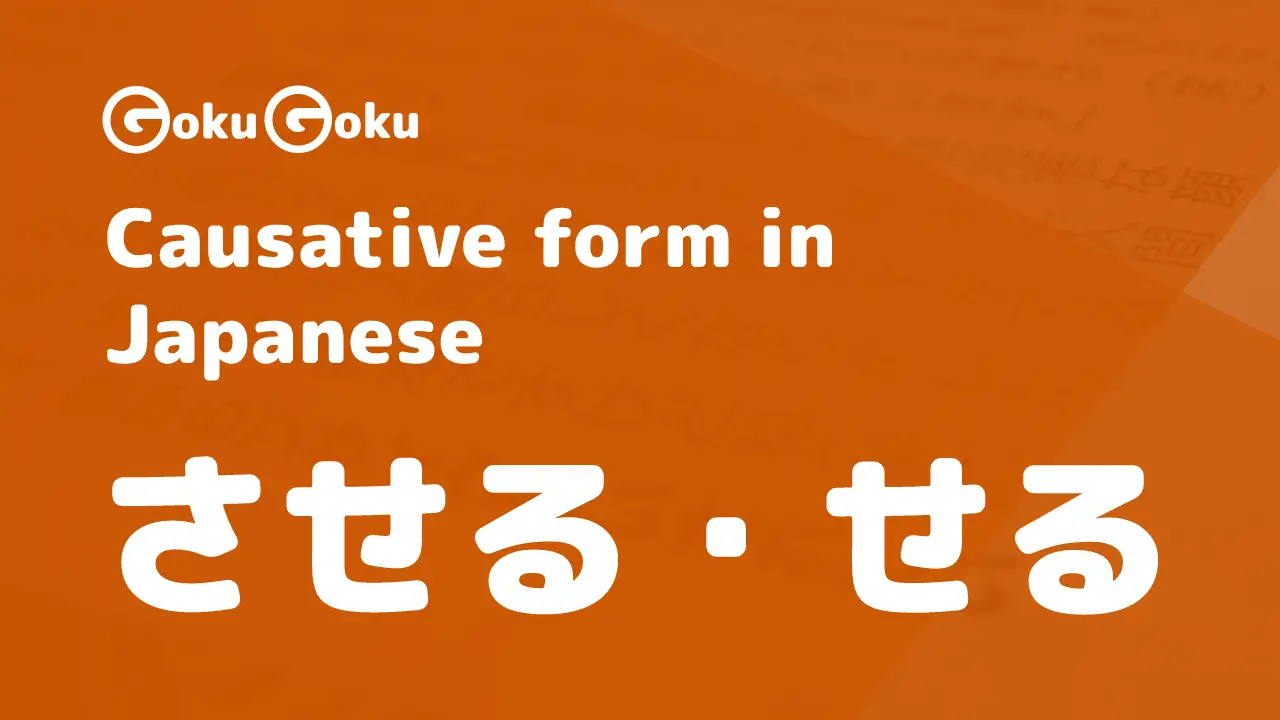Today we see together one of the uses of the te form of the verb in the expressions てみる、てしまう、ておく.
These are forms of common use in everyday life and conversation in Japan. We will also see variations of the same forms in informal contexts.
Let's first review the grammar rule to get the te form.
te form
For the ichidan verbs, single base, it is sufficient to omit the final syllable る and add て:
見る, remove る and get 見 + て: 見て
起きる, remove る and get 起き + て: 起きて
For the godan verbs we have 4 groups instead. We suggest to read the section that deals in detail with the various forms. Here are some representative examples:
座る becomes 座って
置く becomes 置いて
飲む becomes 飲んで
話す becomes 話して
てみる - Try to do something
The first use sees the form in て combined with the verb 見る which means see, look, observe and is used every time you try to do something.
名前を漢字で書いてみた。
I tried to write the name in kanji .
日本へ行ったら、着物を着てみたいだ。
When I go to Japan, I would like to try wearing a kimono .
- In this sentence we used the form in たい, which expresses the
desire to do something
試し is the proof, the experiment, the test
With the form てみる you often find the adverb 試しに written generally in hiragana ためしに, to try.
Aこのパン屋さんは人気があるんだって!Bじゃあ、ためしにパンを買ってみようよ!
A: This bakery seems to be very popular. B: So let's buy some bread to try it!
If we want to explain てみる with a Japanese sentence, we can say:
良いか悪いか分かりませんが試してみる。
I don't know if it's good or bad, good or bad, but I try .
クッキーを焼いたから、ためしに食べてみて!
I made some cookies, come on try them!
We are expressing attempts that are made, the outcome is not known, but what matters is to try to do the action or to suggest to the other person to perform the action regardless of the result.
新しいうどん屋が出来たそうだよ!ちょっと行ってみようか。
I heard they opened a new restaurant in udon. Shall we try it?
In the sentence we find the form みようか, in its polite form みましょうか, widely used when you want to
invite someone to do somethingor for asuggestion.電話してみようか: (what do you say) let's try to call?
名前までは分からなかった。地図を使って住所を調べてみた。
I didn't know the person's name. I tried to find the address using a map .
しまう - To end up doing something
The second use of the te form involves the union with the verb しまう, the form てしまう and てしまいます in its polite version.
It is used to express:
An action that has been completed completely
An accidental action, without a real will on the part of the subject
An action or event that generates regret
疲れが出たので、寝てしまった。
I felt tired and ended up going to bed .
The sense is that there was no real intention to go to sleep, but from exhaustion I ended up going to bed.
昨日買ったケーキは、全部食べてしまった。
I ate all the cake I bought yesterday .
This sentence expresses the completion of an action, in Japanese 完了 (kanryō) and we can add that the verbs used in these cases they are called 意志動詞 ishi dōshi and refer to intentional actions:
- 意志 is the
intentionand thewilland 動詞 theverb
Contracted forms of てしまう
This form has a contracted version that is used in a confidential and informal context:
ちゃう and じゃう for the
present tenseちゃった and じゃった for the
past tense
How do I decide whether to use ちゃう or じゃう?
I add ちゃう if the verb ends with the form in te て
I add じゃう if the verb ends with the form in de で
身分証明書を無くしちゃった。
I ended up losing my identity card .
Here we are talking about an event that happened, obviously there was no will on the part of the subject, it happened, an inconvenience occurred.
Here is a sentence taken from an advertising of some sweets:
食べちゃいたいほど超かわいいスイーツ5選
Five super cute sweets you will want to eat .
We have the colloquial, confidential form ちゃう which is conjugated and expressed with the suffix
たい expressing a wishand thus becomes: verbal base + ちゃいたいits form with しまう is instead しまいたい、 食べしまいたい
大切な時計が壊れてしまいました。
My valuable clock broke .
This type of sentence expresses the feeling of 後悔 regret and of 残念 disappointment and in these cases it is involuntary actions 無意志動詞 muishi dōshi:
遅刻してしまった。
I'm late.
This sentence is literally I ended up arriving late and also expresses regret for an action where there was no will on the part of the subject.
ておく - Do something in advance, prepare for
The third expression we see is the te form + the verb おく: ておく.
ておく is used whenever we anticipate something to facilitate and favor subsequent events, subsequent developments linked to that thing, to that action.
友達が遊びに来るので、ケーキを買っておく。
Since friends will come to visit me, I'll buy a cake (for the occasion) .
おく as a verb has the meaning of put, so the sentence has the meaning of:
since some friends will come, I buy a cake and keep it there
I don't know if they will like it, but in the meantime, for safety, I buy it and keep it at home
A word that expresses the use of ておく is 準備, the preparations
Leave things as they are
そのままにする expresses the sense of this use well: leave as it is, in the position in which it is.
暑いですから、窓を開けておいてください。
Since it's hot, leave the window open .
The key verb in this case is 放置する, leave the situation as it is
A note:
ておく is a form used in the first person, by the speaker and not by third parties. We can say:
私がケーキを買っておく: I buy a cake (in anticipation of my friends coming)
and not 彼がケーキを買っておく
Contracted form of ておく
In a colloquial and confidential context, we can use the contracted form of ておく which becomes とく.
The form ~ておく is thus used for actions that are undertaken early for a precise purpose and objective. It is therefore used for intentional actions, with verbs called 意志動詞.
ドライブに行く前に、ガソリンを入れておく。
Before leaving, I'll get petrol.
Other examples with intentional actions:
大事な事をメモしておいた。
I have noted important points .
訪問する前には友達に電話をしておいたほうが良いだ。
Before your visit, it is best to make a phone call to friends (who visit) .
Let's see an example that shows a situation of 準備, preparations, things we do in advance to facilitate future developments.
コンサートのチケットはすぐ売れきれだから、1年前に買っておいた。
As concert tickets sell outquickly, we bought them 1 year earlier.
There is also a sense of precaution, prevention in this form.
携帯の充電がなくならないように、充電しておく。
I keep my phone charged to avoid running down.
We have seen examples and applications of the 3 forms てみる, てしまう and ておく. The advice is to apply the various expressions, try to formulate your own sentences even in everyday and informal contexts.
ありがとうございました。 また 次回に! Thanks and see you next time!







